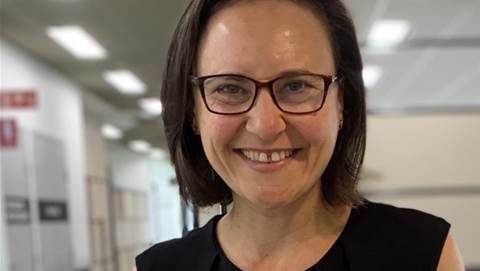Hansen Yuncken is using 3D modelling software to ‘walk’ customers through the sequencing of their construction projects, improving transparency and explainability of risks such as time delays.

In this week’s episode of the iTnews Podcast, Rexine Jones - who is both CFO and CIO of Hansen Yuncken - discusses the company’s use of Autodesk’s BIM 360 software.
She also details the lived experience and advantages of having finance and IT led by a single executive.
Hansen Yuncken is a major Australian construction company with annual turnover exceeding $1 billion and 600 staff across nine offices.
The company has a central IT-OT operation with 13 staff, supported by dedicated virtual design and construction (VDC) and building information management (BIM) personnel that sit in the business, as well as technology partners like Autodesk.
“Five or six years ago, we had one or two VDC engineers across the whole of our business,” Jones said. “We now have eight to 10 supporting the business.”
The growth in VDC resources coincides with growth in the use of Autodesk software on construction projects.
Jones cites the redevelopment of Meadowbank TAFE in Sydney, the Greater Shepparton Secondary College, the University of Queensland’s flagship Liveris building, and the University of Newcastle’s new building in the inner-city Honeysuckle precinct, as examples of recent projects where Autodesk was used to map out, visualise and manage the construction effort.
The software is useful in the context that construction is “really … a risk management process.”
“We've had great success in working with the [project] client to understand their needs: explaining to the client our needs, walking them through and using the technology to virtually satisfy both of us in how this construction is going to go, and how we can overcome hurdles and reduce risks,” Jones said.
“Each party can understand what the other party's concerns are, or what their excitement is.”
Jones said that using Autodesk in a project is particularly useful for transparency and explainability when circumstances arrive that might result in a time delay for a stage or for completion.
She said the technology had been used on both the Meadowbank TAFE and University of Queensland projects in this specific circumstance.
“What the project team did was run the client through the sequencing of the project, and then run them through a virtual build and how it was adapted,” she said.
“The success of that was that we could articulate the change, and the client understood.”
Prior to using Autodesk, communicating the reasons for a delay would invariably involve “a lot of pen and paper”, heightened financial risks for the project, and a less-receptive client.
“If we consider what we would have done before, I don't think you would have had the same outcomes financially, and I don't think it would have been collaborative. I think it would have been a bit more confrontational,” she said.
“One person would have made a decision and they would have lived or died by their decision in some cases.
“We would have [still] had positive outcomes, but I don't think they would have been as positive or as fast, and I think there would have been a lot more risks along the way financially, and also based on time and change.”
Jones said that Hansen Yuncken’s finance team uses the same project visibility to walk the extended finance team through current projects.
“They hadn't been out onsite for some period of time, and they found it exciting,” Jones said.
Push-and-pull
Hansen Yuncken is an early adopter of Autodesk 360 software within Australia, and has an enterprise business agreement (EBA) with the vendor.
Jones indicated the relationship dynamic between Hansen Yuncken and Autodesk is emblematic of the maturity of the company’s technology operations.
Where a decade ago it would’ve been satisfied to just buy software and implement it, Jones said that today, the company demanded more from its partners.
In the case of Autodesk, this means fortnightly and quarterly calls, access to technical resources and an ability to get the product tweaked to satisfy emerging needs or use cases.
“We're pushing them, they're pulling us,” Jones said. “We're challenging each other, and at the end of the day, the bit that I love the most is if they can do something, they will absolutely do it, but they're [also] going to be quite honest and say, ‘We can look at it but we can't do it today’.”
Project roles
While her remit as CIO has Jones overseeing the IT infrastructure and application estate, she also “owns [the] innovation and the operational [technology] space” at Hansen Yuncken.
This is one area where her dual role as CIO and CFO comes into play.
“I think the value of having the CFO and the CIO together in one area is that I can allow the investment we make in that space to be as big as it needs to be,” she said.
“It allows for an investment strategy that we have to continue along our IT journey.”
Jones notes that Hansen Yuncken’s technology team is also firmly in the service of the firm’s construction projects, so part of her role is earning the technology function a seat at the table of each project the firm is awarded.
“We have multiple project managers, and every project is slightly different,” she said.
Subscribe to The iTnews Podcast at Apple Podcasts, Google Podcasts, Spotify, Amazon Podcasts or wherever else good podcasts are found. New episodes will be released every Monday.





















.png&h=141&w=208&c=1&s=1)

